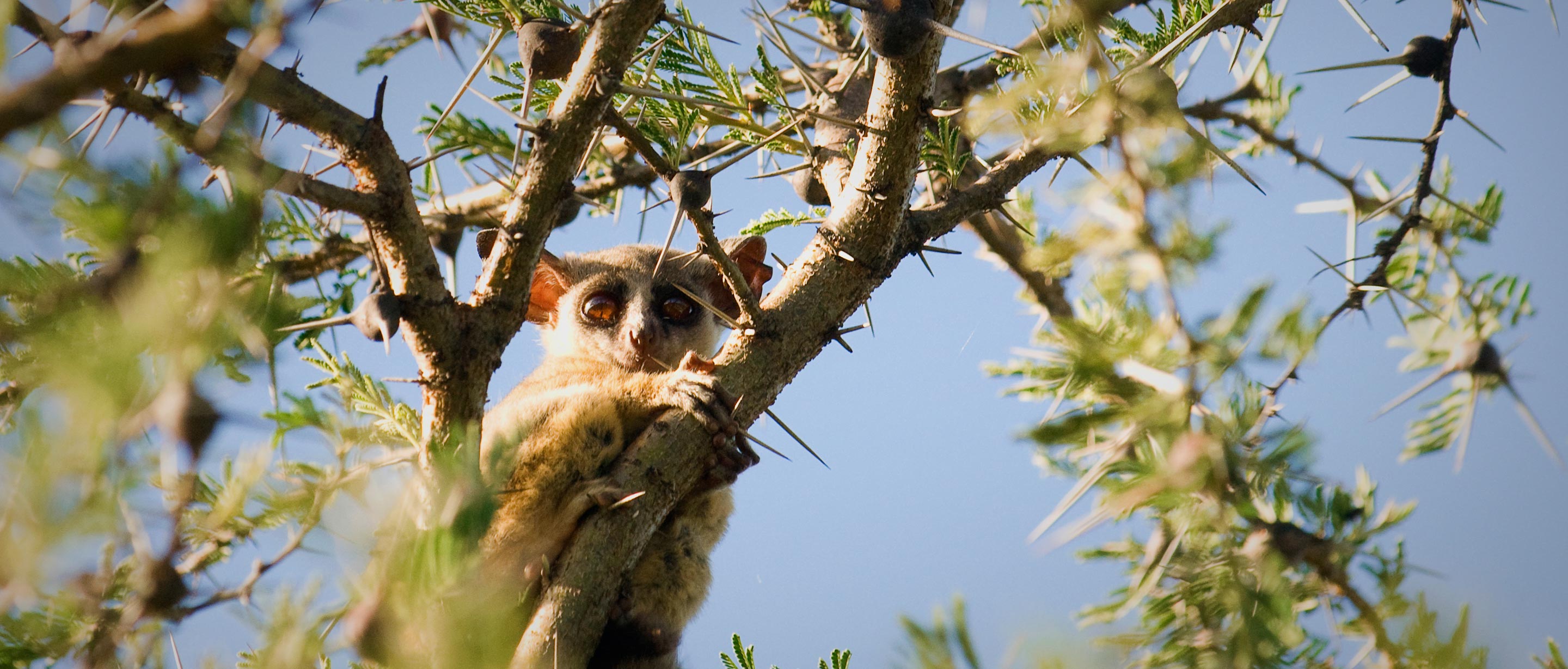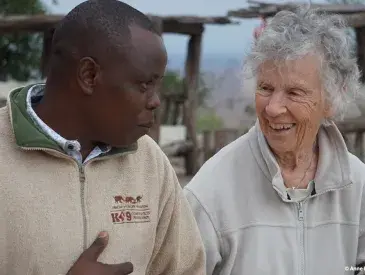What is a bush baby?
The lesser galago, also called the lesser bush baby, is one of the smallest primates, about the size of a squirrel. Their plaintive cries and cute appearance may account for the name "bush baby. They have large, round eyes for good night vision and bat-like, delicate ears that enable them to track insect prey in the dark. As they jump through thorn bush or thick growth, they fold the ears flat against their heads to protect them. They fold them during rest, too.
Galago senegalensis
95 to 300 grams (3 to 10.5 ounces)
Average 130 millimeters in length (about 5 inches)
No longer than 3 to 4 years in the wild; up to 14 years in captivity
Woodlands and bushlands
Omnivorous
4 months
Eagles, owls, genets, and large snakes
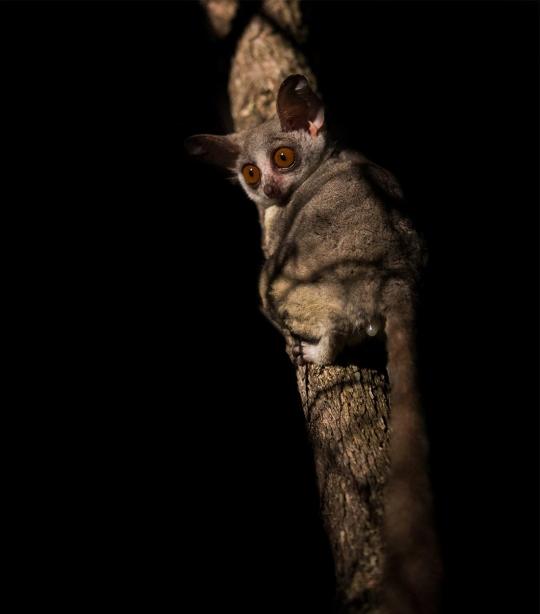
Challenges
They are losing living space.
As human populations grow, they encroach on wildlife habitats as they build new settlements, increase agricultural production, and construct new roads.
Solutions
Our solution to ensuring the continued survival of the bush baby:
African Wildlife Foundation brings together communities and private investors to construct conservation tourism lodges like The Sanctuary at Ole Lentille in Kenya. The lodge provides sustainable income for the community, and the 20,000-acre conservancy is a safe home to a variety of wildlife.
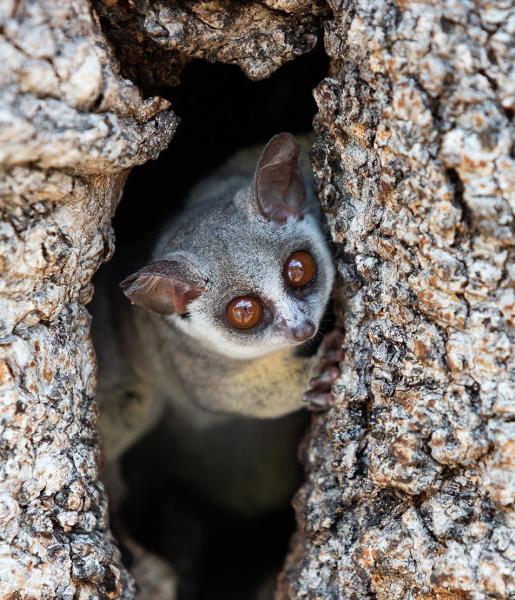
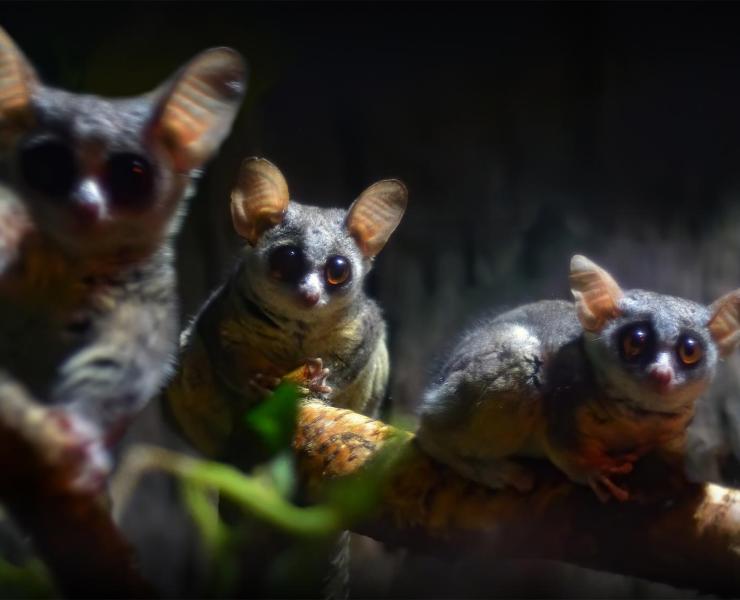
Behaviors
They cry like human infants.
Despite their small size, the bush baby produces loud, shrill cries surprisingly like those of a human baby. Aside from these baby-like cries, they make croaking, chattering, and clucking sounds or shrill whistles in case of danger.
Bush babies travel in leaps and bounds.
In a series of leaps, a bush baby can easily cover 9 meters in seconds. The tail (longer than the length of the head and body) powers the leaps made to catch prey, escape from enemies, or get around obstacles. The small primate’s other methods of locomotion are kangaroo-like hops or simply walking or running on four legs. They frequently mark their routes with urine. By following their scent, they can jump onto the same branches each time when they go to or from their nest. Males also urine-mark the boundaries of their territories and will sometimes become aggressive toward intruders.
The tiny newborn weighs less than half an ounce.
Females may have singles, twins, or triplets, with each newborn weighing less than half an ounce. The first three days or so the mother keeps the infants in constant contact with her. She picks them up with her hands or mouth, and they cling to her. The young are suckled for six weeks and can feed themselves at two months. They grow rapidly, causing the mother to walk slowly and awkwardly as she transports them. Sometimes, the mother will take just one young with her, leaving the others in the nest.
Diet
The bush baby enjoys a varied, seasonal diet.
The majority of their diet is made up of what is most abundant at that time of the year, including insects, leaves, and fruit.
Habitats
Where do bush babies live?
These small primates are found throughout East Africa as well as in woodlands and bushlands in sub-Saharan Africa. They are possibly one of the most widespread galago species (bush baby species). They generally do not inhabit areas above altitudes of about 1,980 meters (6,500 feet). Most often, they live in tree hollows that provide shelter. Sometimes, they construct nests in the forks of branches, but these are not as commonly used as are natural holes. They prefer trees with little grass around them, probably as a precaution against wildfires. They will also seek shelter in man-made beehives.
